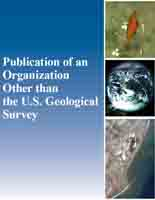Increased heterozygosity and body condition result from admixed translocation of the threatened Mogollon Narrow-headed Gartersnake (Thamnophis rufipunctatus)
Links
- More information: Publisher Index Page (via DOI)
- Open Access Version: Publisher Index Page
- Download citation as: RIS | Dublin Core
Abstract
Enhancing gene flow through translocations can be a useful tool in recovering small and isolated populations. However, it is not devoid of genetic risks, such as outbreeding depression in future generations, that can have negative consequences in terms of the establishment and mean fitness of the population. Studies that monitor the long-term effects of genetic rescue on populations in the wild are few, especially for snakes. We used long-term genetic monitoring and body condition indices to investigate the consequences of conservation translocation and genetic admixture in a Mogollon Narrow-headed Gartersnake (Thamnophis rufipunctatus) wild population. We compared genetic diversity and fitness metrics among the source and recipient populations to evaluate individual- and population-level fitness responses related to the conservation translocation. Our study found persistent captures with continued monitoring for over a decade post-release, and the recipient population showed lower inbreeding values and an increase in heterozygosity that was 19% higher than the two source populations. Snakes sampled in the recipient population had higher individual heterozygosity and body condition than those in the extant source and reference populations. Further, Bayesian regression models supported a significant positive relationship between heterozygosity and body condition after accounting for among-site differences, suggesting that efforts to increase heterozygosity can improve mean fitness in these populations. Our study highlights the potential benefits of conservation translocation from multiple source populations to restore the distribution and increase heterozygosity and population fitness of this threatened gartersnake. Alongside ecological restoration, translocation programs could be used to ensure both the persistence and resilience of populations throughout the species’ range.
Study Area
| Publication type | Article |
|---|---|
| Publication Subtype | Journal Article |
| Title | Increased heterozygosity and body condition result from admixed translocation of the threatened Mogollon Narrow-headed Gartersnake (Thamnophis rufipunctatus) |
| Series title | Conservation Genetics |
| DOI | 10.1007/s10592-025-01677-3 |
| Volume | 26 |
| Publication Date | February 17, 2025 |
| Year Published | 2025 |
| Language | English |
| Publisher | Springer |
| Contributing office(s) | Western Ecological Research Center |
| Description | 16 p. |
| First page | 403 |
| Last page | 418 |
| Country | United States |
| State | New Mexico |


